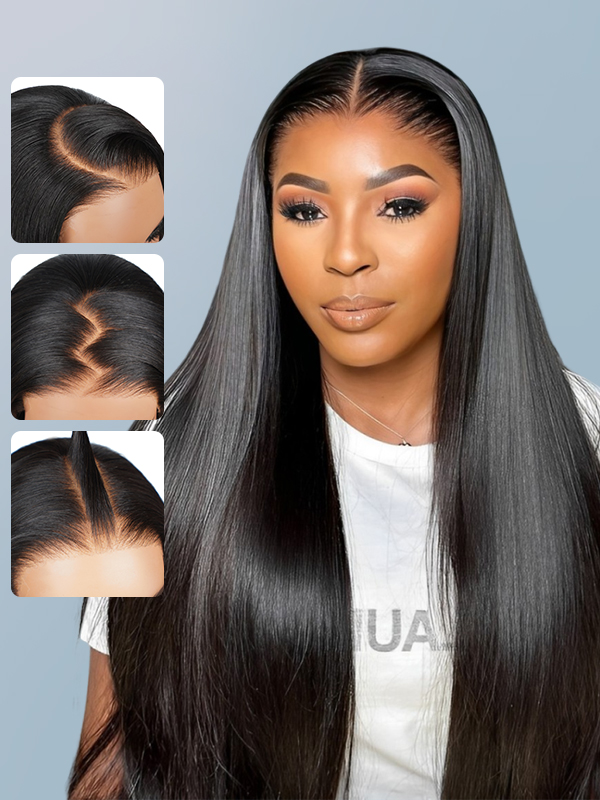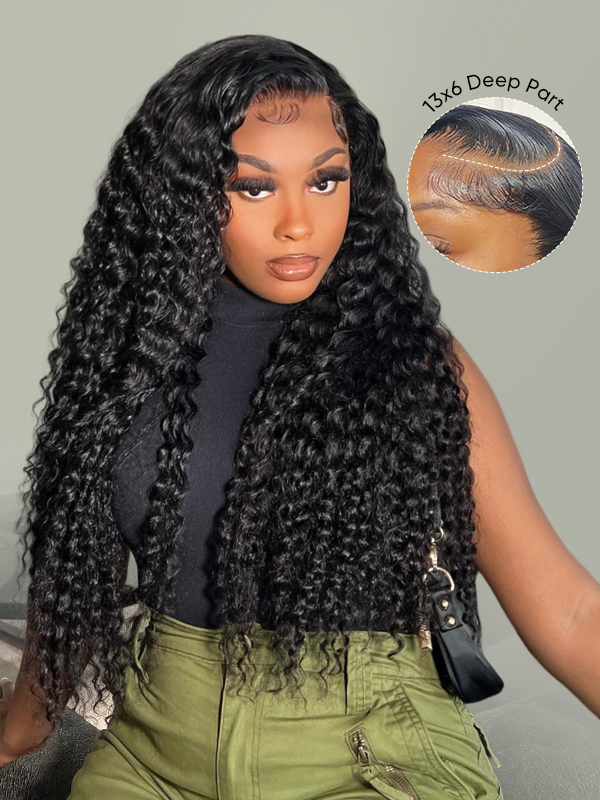Maintaining the quality and durability of wigs, particularly those fashioned from real hair, demands a meticulous method of cleansing and maintenance. Is it bad to submerge wigs in water to wash is not for the faint of heart. Too often, the simple act of washing a wig becomes the catalyst for a series of unfortunate events that lead to the wig's premature demise. It is often the wig wearers themselves who unwittingly set in motion the tragic sequence of wig destruction.
They bathe their wigs in water without thinking of the consequences. Their intentions are good—after all, bath time is what all forms, human and otherwise, of hair are made for. But our dear wigs are not prime candidates for that spa-like experience.
Why Full Submersion May Be Risky for Certain Wigs
Is it bad to submerge wigs in water to wash, especially one that's attached to a delicate lace cap or ventilated base, the secure knots that hold the strands in place are at risk of being loosened. This can lead to a shedding wig and, eventually, a balding wig.
Water can also collect at the nape and inside the cap, causing tangling, which is a rearranging of the wig's strands that keratinized hair should keep in distinct order—that's particularly difficult to straighten or resolve if the wig's owner is relying on a good brush to restore order.
If, however, the brush is a wig brush and the nape area has a good portion of hairs that are just as robust as the strands just inside the cap, a much more sustainable order may be achieved. But problem-solving cannot begin until order is disturbed, which may just be an inevitable part of wig ownership.

Better Alternatives to Full Water Immersion
Instead of submerging the whole wig in a sink or basin, the wig should be rinsed under a gentle stream of lukewarm water, with helpful forces like gravity working to dislodge and wash away accumulated products and dirt from the fibers. This provides better control and reduces friction along the strands and in the lace area, which is a kind of "faux scalp" woven right into the wig that allows for an almost natural appearance.
Wig care experts say that the only way to rinse out accumulated products safely and without disturbing the wig too much is to hold it under an almost tropical stream of water, letting it rinse free without being scrubbed the way you'd clean a dish with a bottle of dish soap.
The Role of Cap Construction in Water Exposure
Constructing wig caps can be an art form. How a wig cap is made can determine if it is durable enough to handle washing methods that involve full submersion or if it will start to break down when subjected to even the most carefully controlled washing environments. Full-water washing was developed with a mind toward washing (nearly) all wig types at nearly all times.
Is it bad to submerge wigs in water to wash include the kinds made with: wefts (or parts of wigs that are sewn together) that are not glued in and that are made with breathable materials; or glues that are wet-water-resistant, such that the materials used to make a wig will not break down even when completely submerged in water for up to about an hour, in most cases.

Maintaining Wig Quality with Gentle Handling
When washing the wig, proper handling is equally important as the wig's exposure to water. You may decide to fully immerse the wig in water or not. Either way, you must first and foremost detangle the hair before washing. You should use your fingers or a wide-tooth comb to do this.
A crucial, often overlooked, step is securing the lace front while you do this so that you do not put stress on the part of the wig that is most prone to stretching and tearing.

Recommendation
If you're looking for premium-quality wigs that won't lose their strength and style after several washes—and really, who wouldn't want that?—WIGGINSHAIR has a comprehensive selection of wigs made from human hair, with high-grade lace and nuts that are as durable as they are low-maintenance. Is it bad to submerge wigs in water to wash? While water itself isn't damaging, improper submerging techniques can cause harm. The real issue lies in the washing method, not the water exposure.







































